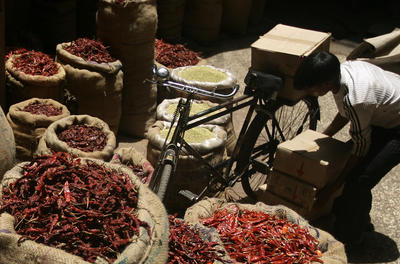This is a strong move on the part of the RBI to contain inflation and inflationary expectations in the absence of complementary fiscal policy and supply side responses.
Given the rigid headline inflation of around 10 per cent and core inflation of more than 7 per cent, the RBI had few options other than sending out this strong message to moderate demand-driven pressures on non-food manufacturing inflation. The bigger point is that tight monetary policy, as in the mid-1990s, is likely to hurt growth while having a lagging impact.
Is India’s over-dependence on monetary policy and inability to improve supply-side bottlenecks forcing it to sacrifice growth?
Since inflation today is higher because of supply-side pressures resulting from increases in the cost of production, poor governance and an unattractive business climate, tight monetary policy may not be a very effective instrument in controlling inflation. But it certainly can derail India’s high-growth story.
The high inflation trends in the last few quarters owe predominantly to contributions by primary articles, fuel and manufacturing. While the fuel price hike is the result of increases in the international crude prices from US$80 per barrel in September 2010 to US$110 in May 2011, the rising cost of primary articles is attributable to supply side factors. The trade and transaction costs in the primary sector are very high. For example, the price of primary articles increases three-fold during their journey from firm to market. The non-food manufacturing inflation may be due to cost-push factors rather than only demand pressures. In this context, the rise of interest rates coupled with a poor business environment is likely to only further tighten the supply side of the economy and threaten overall growth.
The index of industrial production (IIP) has been moderating since the third quarter of 2010–11. The decline in primary industry and manufacturing continued, reaching 5.6 per cent in May 2011. Crucially, manufacturing, which constitutes 80 per cent of the IIP, continues to be on a downward trend and experienced a growth rate of 6 per cent in April–May 2011–12, compared to 11.6 per cent for the same period in the previous year. If one looks at the use-based classification, except for basic and consumer non-durables, demand for capital goods, intermediate goods and consumer durables has slowed down consistently since the 3rd quarter of 2010.
This slow-down in these important categories signals that there is an overall slowing down of economic activity and demand which contradicts the RBI’s statement that ‘there is no evidence of broad based slow down’. The latest tight monetary measures will certainly slow down consumption demand and investment, which is already on a downward trend since mid-2010–11.
The tight monetary policy has already had a visible impact in the slowing down of manufacturing and industry over the last couple of quarters. The latest figures show that the flow of credit to the commercial sector declined while credit to the government increased. Thus any further increase in lending rates owing to the July round of monetary policy might affect credit flows and asset quality in the system. This will certainly moderate growth in the coming quarters. The RBI’s target of 8 per cent growth appears difficult to reach.
The RBI has correctly recognised that when, as is the case now, fiscal consolidation is lacking, central banks must take strong measures. But policies that lead to the slowing down of growth are not going to help. Fiscal deficit has increased since the 4th quarter of 2010–11 in response to decelerating growth and this is likely to continue, as the government will find it difficult to mobilise more resources as the corporate and service sectors slow down. Since the government has committed to expenditures such as social welfare programs the higher fiscal deficit is likely to put more pressure on interest rates, affecting the private sector.
Another worry for the Indian economy is the lack of capital inflows along with low investment activity in industry and services. Capital inflows, foreign direct investment and foreign portfolio investment all declined in 2010–11 compared to 2009–10. Given the level of corruption, land acquisition, environmental issues and the economic woes in the US and Europe, it is unlikely that the state of capital inflows will change soon.
Rising commodity prices and overall inflation is a common trend across countries, although the inflation in developing countries is associated with higher growth. The present growth in developing countries is mainly coming from high domestic demand. Therefore, the present attempt to slow down domestic demand in India will thus almost certainly negate growth. The situation is such that there is a need to focus on supply-side bottle necks more urgently along with sector-specific reforms rather than just moderating demand. In this context, good governance and the sensible expenditure of public funds, as well as infrastructure development, are crucial for improving the overall business climate and investment opportunities, which will in turn contribute to the supply side.
Pravakar Sahoo is Associate Professor at the Institute of Economic Growth, India.

